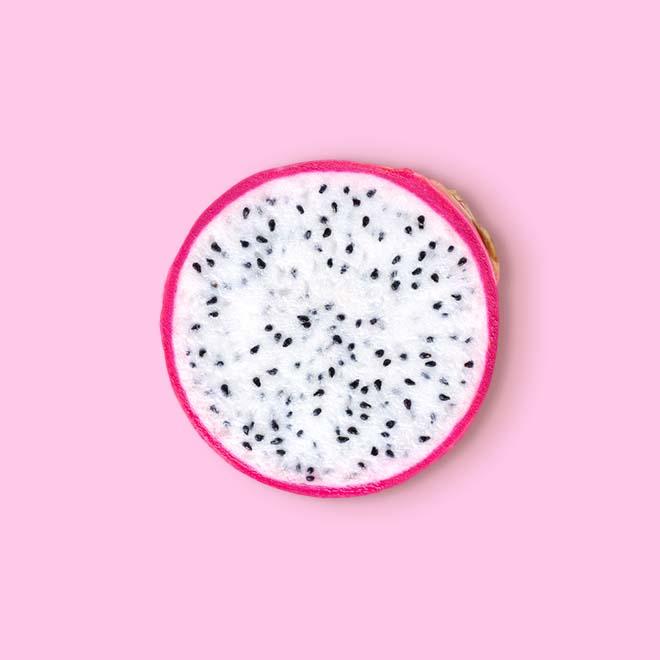Dragon Fruit




Dragon fruit, also known as pitaya or pitahaya, is a tropical fruit originating from Central and South America but now grown in many tropical and subtropical regions worldwide.
It comes in diverse varieties, with the most common ones having either pink or yellow skin covered in green, leafy scales. These scales resemble a dragon's scales, hence the fruit's name. Inside, the flesh varies in color, ranging from white to vibrant pink or fuchsia. Some varieties even have black or red speckles scattered throughout the flesh. Tiny black edible seeds are scattered throughout the flesh, similar to kiwi seeds.
Dragon fruit has a mildly sweet and slightly floral taste, often described as a cross between kiwi, pear, and watermelon. Some varieties may have a subtle citrusy note. It can be used in various desserts like sorbet, ice cream, cakes, and tarts and is a good choice for weight management due to its low-calorie content.
When buying dragon fruit, avoid fruits that are overly soft or wrinkled, as they might be overripe. Choose dragon fruit with vibrant, even-toned skin. Look for fruits with a fresh, green stem and intact scales. Dried or brown stems and missing scales could indicate the fruit has been sitting for too long.
Store unripe dragon fruit at room temperature, away from direct sunlight, for up to 5 days. Once ripe, it's best consumed within 2-3 days.
Mash dragon fruit with yogurt and honey for a hydrating and antioxidant-rich face mask. The natural enzymes help exfoliate and leave your skin glowing.
Blend dragon fruit puree to create a vibrant pink food coloring for cakes, frostings, or even Easter eggs. It's a natural and fun alternative to synthetic dyes.
Dragon fruit skin can be boiled with sugar and lemon juice to create a vibrant pink jelly or jam. Spread it on toast, yogurt, or use it as a cake filling.
In Vietnam, dragon fruit is called "thanh long," which translates to "long dragon." It's considered a symbol of good luck, prosperity, and long life.
Some dragon fruit varieties change color as they ripen! The vibrant pink or yellow skin might turn reddish or even orange as the fruit reaches peak sweetness.
In Peru, a unique dish called "granadilla de pitahaya" combines dragon fruit pulp with mashed green plantains. The result is a sweet and savory blend with a creamy texture, showcasing the surprising culinary versatility of this fruit.
Diced dragon fruit caramelizes beautifully when roasted. Toss it with root vegetables like sweet potatoes or beets for a vibrant and flavorful side dish.
Freeze chopped dragon fruit and blend it into smoothies or sorbets for a refreshing and vibrant treat. Experiment with different fruit and herb combinations for unique flavor profiles.
Cut the dragon fruit in half and use the shell as a natural serving bowl for fruit salads, ice cream, or yogurt parfaits.
Dragon fruit is rich in antioxidants, particularly betalains, which neutralize free radicals and potentially reduce the risk of chronic diseases like cancer, heart disease, and Alzheimer's. Vitamin C and other nutrients in dragon fruit may help strengthen the immune system and fight off infections.
The prebiotics in dragon fruit promote the growth of gut-friendly bacteria, which can aid digestion and improve overall gut health. Dragon fruit offers a good source of iron, important for oxygen transport and energy production. Some studies suggest dragon fruit may possess anti-inflammatory properties, potentially beneficial for various conditions.
Corrections or improvements? Email us at
content@sidechef.com